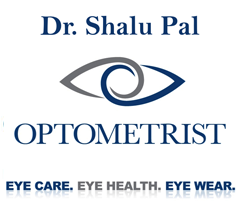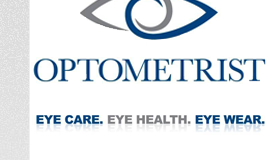Contents |
Glare: Three Choices for Outdoor Comfort
Anyone who spends time outside knows that there are times when the reflected light from surfaces can cause glare, the common term for discomfort from too much light entering the eye. Lens tints and coatings can help minimize discomfort and improve vision significantly.
There are a variety of tints and coatings for prescription eyewear that can help decrease glare and improve comfort and performance, especially for certain sports and activities that take place near water or on snow. Three types of tints and coatings that are used most frequently for these activities are polarization, photochromic lenses and mirror coatings. Understanding how these work is helpful in choosing the best method of glare reduction for specific uses. All three are available for both prescription and non-prescription lenses. Additionally, they can be used in combinations for maximum glare reduction.
Polarized Lenses
Horizontal surfaces such as a paved road or extremely reflective horizontal surfaces such as a lake or a field of snow reflect a large amount of light that interferes with vision. Polarization works to reduce glare by allowing only light that is oriented vertically to get through the lens. Light coming from horizontal surfaces is absorbed by the lens.
The most common way to make polarizing lenses is to add a thin film during the manufacturing process. Polarized lenses are available in multifocal lenses, progressive or no-line bifocals and single vision lenses, as well as non-prescription lenses. If you spend a lot of time on the water or snow, polarized lenses should help cut out a lot of glare.
It is important to understand, however, that while polarized lenses cut glare from horizontal surfaces, they do not restrict ultraviolet (UV) rays, which can cause damage to the tissues of the eye, resulting in cataracts or macular degeneration. Combining polarized lens coatings with sunglass tints will virtually eliminate this problem.
Photochromic Lenses
Photochromic lenses change color in response to the amount of light , and are a good choice for those who do not want to have to switch between prescription sunglasses and their regular eyeglasses. The convenience of having a pair of sunglasses and transparent lenses in one pair of frames is helpful to many.
Photochromic lenses have millions of light absorbing molecules embedded in them, which in artificial room light are transparent. When UV light strikes them, the molecules change by a chemical process which causes them to darken. Most photochromic lenses change from light to dark within 30 seconds or so, and switch back to transparency in about five minutes.
Photochromic lenses absorb most UV light rays, which makes them a good choice for people who want to protect their eyes from light damage, but polarization may be a better choice for those who participate in boating or skiing.
Photochromic lenses have one other main drawback, which is that the UV light that makes them change from light to dark is largely screened out by automobile glass, so they don’t work well as sunglasses for driving.
Mirror Coatings
Applied to the surface of the lens, a mirror coating gives a shiny appearance to the lenses when viewed by others; in effect, it is a one-way mirror, allowing light to pass through from one side and reflecting it from the other. The coating is formed of vaporized metal and are available in a variety of colours.
Mirror coatings are available in several different styles, from solid mirrors, gradient mirrors which reflect more light from the top of the lens, gradually decreasing to clarity about halfway down the lens, or as a double-gradient, which reflects light from both the top and bottom of the lens, but not from the middle area.
Depending on the material coating the lens, mirror lenses can have a silver look or other colors. Because the mirror coating is on the lens surface, they are subject to scratching, so adding an anti-scratch protective layer will help prevent that.
Mirror coatings do not block UV light, so should also be combined with other types of sunglass tints to provide this protection.
Lenses for Specific Uses
For more specific information that applies to a particular situation, ask your eyecare practitioner or a dispensing optician about the various colors and choices for use as sunglasses. A combination of two or more of these options may be optimum for the use they are intended for; it may be that more than one pair might be best, depending on the environment.
Glare can be uncomfortable as well as damaging to the eyes, by reflecting more light into them, including ultraviolet rays that are damaging to the ocular tissues. Blocking light glare is not only more comfortable, it is safer as well.





